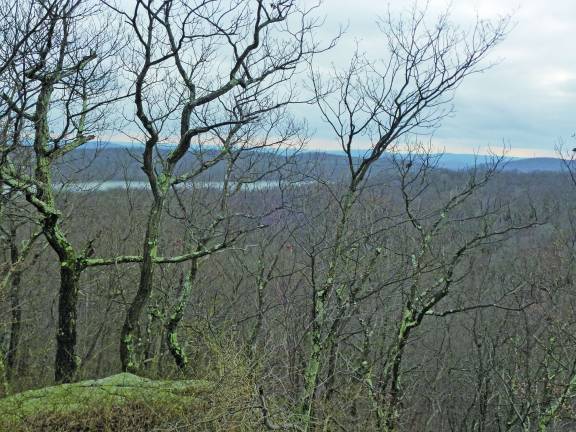Where the sprawl ends There is still wilderness. Even in Jersey.

To see the northern end of Split Rock Reservoir, you must commit to a hike that will take all your daylight hours, even in summer. It will take all of your energy, even if you’re fit. And it will take all of your attention. You won’t have much time to gawk at the astonishing Highlands landscape, not if you want to get through the 14-mile loop in one day. It’s one hell of a trail, all ups and downs and half-buried rocks sticking sharp points into the soles of your boots. (Make sure they’re good ones!) The trail doesn’t rest. Long digressions to the shore alternate with steep climbs back up to the saw-toothed ridge. Your quadriceps femoris will howl. Your cell phone will lose service. And you might, as one Scoutmaster found out last December, get dragged into a cave by a bear.
Every 20 minutes or so, Tom and I scale an outcrop to admire the view. We might as well take it easy. Early on we realize we’re not going to make it all the way around.
I must say, I’m amazed at the place. It makes even a New Jersey native like me believe I’ve gotten the state all wrong. Here we are in the most densely populated state in the country, and we don’t see another soul all day. In Maine, the fringe of firs along its rivers and trails can fool you into thinking wilderness blankets the state, when really the landscape is dotted with paper mills and timbering operations. In New Jersey, the strip malls and housing developments that line arteries like 206 and 23 can fool you into thinking the sprawl is likewise endless. But beyond the stop-and-go traffic is a wilderness vast enough to elude conquest. We don’t even try.
We discovered the trail while kayaking the reservoir in summer. It took only about 90 minutes to paddle its length, starting out from the primitive boat launch near the dam at the southern end. We paddled past looming rock cliffs and tiny rock islands in the grip of a few gnarly trees. We paddled past a marsh where turtles by the dozens sunned themselves on logs. We were assailed by a gang of river otters, who swam out to us and started snorting, their sleek heads bobbing and throwing back shards of sunlight. Tom and I watched the snorting and the bobbing for a long while, then turned to each other and laughed. Summer is like that. Sometimes in summer you just laugh and laugh for no good reason. But today it’s too cold for that sort of thing. There’s a liverish cast to the sky and a constant need for tissues and lip balm. I’ll bet the otters aren’t half so amused as they once were.
The reservoir is remote mainly because it has one public access, reached by one road, Split Rock Road, which is itself a mile long. I’m surprised to learn that the reservoir and the 1,500 acres surrounding it are owned by Jersey City, where Tom and I were born, and where Tom grew up. That explains the riddle of these woods and waters: cities can’t survive without them. It also explains why Jersey City people were always so proud of their water. As a Bayonne person, I’d always thought this was weird. It wasn’t uncommon to see a Jersey City person, surrounded by blight though he was, fill a glass from his tap, pronounce it the best water in the world, and take a long, noisy gulp. Cities seem so self-contained, but that’s an illusion. Split Rock Reservoir and the public lands it touches — Farney State Park, Buck Mountain, Wildcat Ridge — nourish a quarter of a million people from 40 miles away, unseen.
After three hours on the trail, we’re a bit wobbly and looking for a good picnic spot. We find one, a pert round node from which we can see water through bare trees. The Jersey City connection makes me happy, I tell Tom. I look out with a proprietary air, bouncing lightly on the balls of my feet.
We have special privileges here, I say. We’re like members of the family.